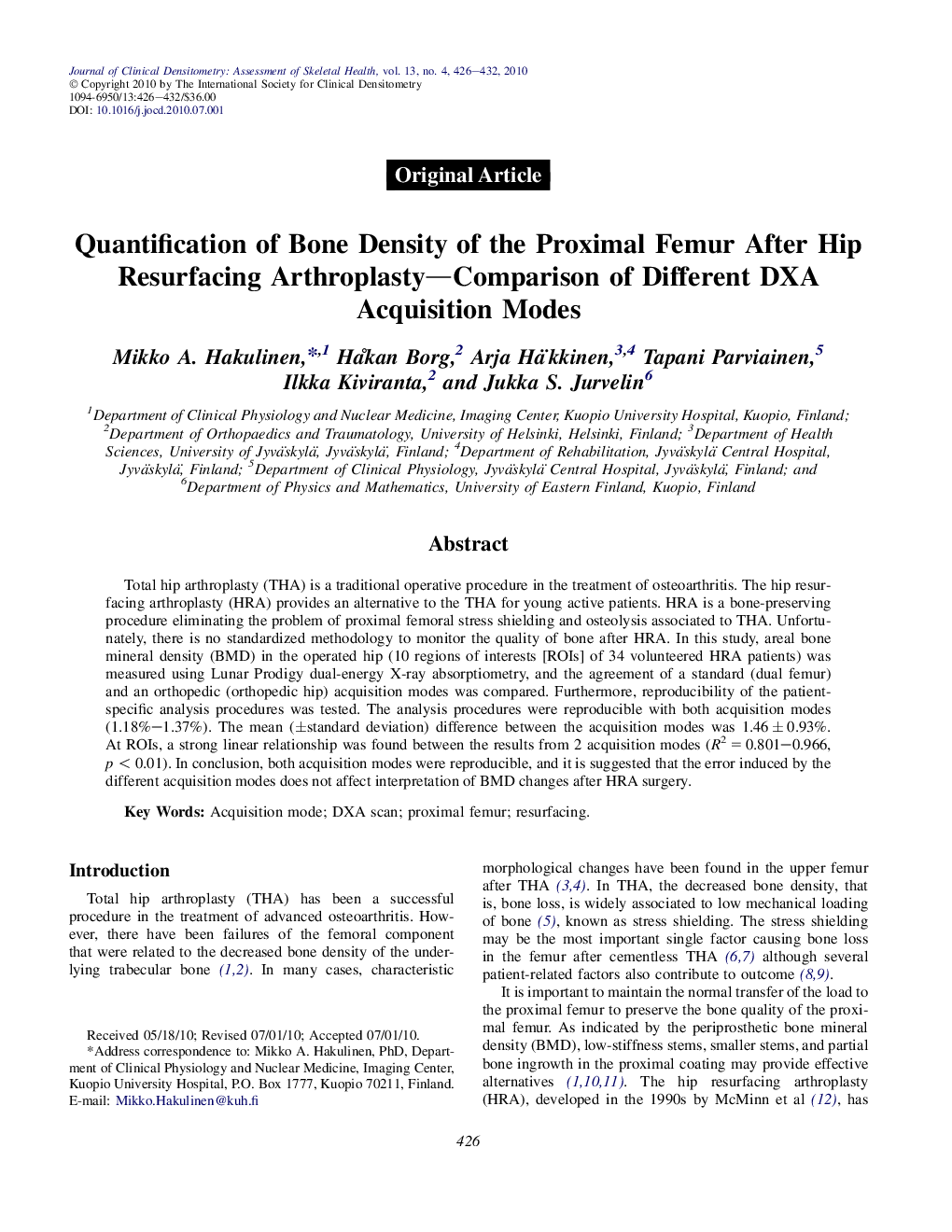| Article ID | Journal | Published Year | Pages | File Type |
|---|---|---|---|---|
| 3271086 | Journal of Clinical Densitometry | 2010 | 7 Pages |
Abstract
Total hip arthroplasty (THA) is a traditional operative procedure in the treatment of osteoarthritis. The hip resurfacing arthroplasty (HRA) provides an alternative to the THA for young active patients. HRA is a bone-preserving procedure eliminating the problem of proximal femoral stress shielding and osteolysis associated to THA. Unfortunately, there is no standardized methodology to monitor the quality of bone after HRA. In this study, areal bone mineral density (BMD) in the operated hip (10 regions of interests [ROIs] of 34 volunteered HRA patients) was measured using Lunar Prodigy dual-energy X-ray absorptiometry, and the agreement of a standard (dual femur) and an orthopedic (orthopedic hip) acquisition modes was compared. Furthermore, reproducibility of the patient-specific analysis procedures was tested. The analysis procedures were reproducible with both acquisition modes (1.18%-1.37%). The mean (±standard deviation) difference between the acquisition modes was 1.46 ± 0.93%. At ROIs, a strong linear relationship was found between the results from 2 acquisition modes (R2 = 0.801-0.966, p < 0.01). In conclusion, both acquisition modes were reproducible, and it is suggested that the error induced by the different acquisition modes does not affect interpretation of BMD changes after HRA surgery.
Keywords
Related Topics
Health Sciences
Medicine and Dentistry
Endocrinology, Diabetes and Metabolism
Authors
Mikko A. Hakulinen, HÃ¥kan Borg, Arja Häkkinen, Tapani Parviainen, Ilkka Kiviranta, Jukka S. Jurvelin,
